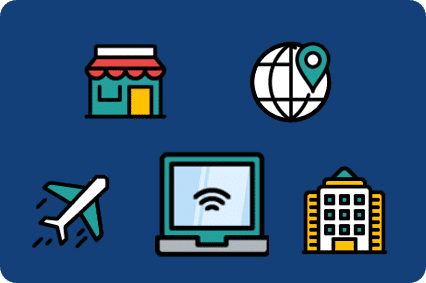BLOGS
Technology is Shaping the Future of Asset Management

Modern technology is changing the face of businesses in virtually every industry - from finance to food production, car manufacturing to healthcare. More and more businesses are replacing various manual tasks with digital tools and software to transform the way that they run.
Asset management and administration is one field that has remained relatively untouched by niche-specific tech advancements. Many companies don’t even have internal lease management practices, let alone automated, digital, asset management tools to help manage and regulate data. But the rapidly evolving technological changes are starting to attract attention, with asset managers realising the time-saving, cost-effective benefits of the right tools.
In this blog, we’ll discuss the future of asset management, examining some of the ways the sector has changed over the years and where it might be headed due to the rapidly advancing technological landscape.
How Has Asset Management Changed Over The Years?
Asset management is arguably one of the most important jobs when it comes to managing a business and is vital to securing financial success. From the evolving needs of clients to the shift in regulations such as the new IFRS 16 which comes into force on 1st January 2019, asset management has seen much change over the years.
These changes have meant that the sector has evolved to keep up and asset managers are taking more factors into consideration when it comes to regulating and reporting on their asset portfolios. All whilst employing generic technology advancements.
How Can Technology Help To Change The Way Asset Portfolios Can Be Managed?
With the role of asset management transforming to keep up with the industrial developments, it may be that professionals will soon feel as though they have too much on their working plates at once - if they aren’t feeling that already. Incorporating technology can have a major impact on asset management. While it may mean that traditional management tasks become obsolete in the future, it can open up many opportunities and benefits including:
Helps To Save Time Spent On Task s And Improves Working Efficiency
Many companies, from small to large, industry-leading organisations, are yet to incorporate online lease management and accounting systems and even when they do, they’re typically using spreadsheets. As well as being outdated, these methods are incredibly user-unfriendly and lead to vast amounts of time being unnecessarily spent on searching for and processing data.
While using spreadsheets and offline methods might have worked (to a point) in the past, the ever-evolving nature of the financial world, such as the introduction of new legislation and standards, mean that there is always new knowledge and data that asset managers need to be aware of. This increasing amount of data will only continue to slow financial advisors down as time goes on.
Adopting a technological alternative, such as a centralised, online platform to store all of your leased asset information in one place, can help to save time and improve your overall working efficiency. These platforms come with search and filter features which allow you to easily find asset data without needing to manually search and process the physical copies as you might have in the past.
Reduces Wastage Of Space
Storing physical copies of data is neither cost effective nor is it time-saving. It also takes up a lot of physical space. Using spreadsheets might seem like a viable alternative and while it might be for a while, modern day leased asset management is continually growing and demanding more electronic space. Many companies will find themselves requiring more space for their servers.
Cloud software is the technological alternative which allows you to store all of your asset data onto the ‘cloud’, an online database and storage point. This database requires no physical space and if you ever need more memory, you only need to upgrade your cloud storage which is a near-instant process. This leaves you with all of the extra physical space which you would have originally needed for your servers to be put to good use for your business.
Saves Money
Without efficient management, competitive lease rates and low operating costs, well negotiated, can turn into poor deals and wasted money when neglected. Asset management technology, such as LOIS, provides a centralised, online database for all of your data to be stored on.
This means you can easily search for and filter through your balance sheet and lease portfolio, quickly identifying which leases and operational burdens are becoming too expensive and taking the relevant steps to rectify them. This advanced piece of software allows for tailored insights, so you can closely monitor asset spending as efficiently as possible and make the appropriate cuts where necessary.
Ensures You Are Always Up To Date And Your Business Is Compliant With The Latest Lease Accounting Standards
Practices are constantly changing, with the official implementation of IFRS 16 which is less than a year away being the most notable development. This means asset managers need to always be up to date on leasing standards if they’re to ensure their business’s balance sheets are compliant. Rather than searching through the leases to identify the ones that need reviewing and rewriting, which is an incredibly time-consuming process, asset management software can provide reporting tools for you.
For example, in light of IFRS 16, lease accounting standards are about to change. Not only will asset management software solutions, such as LOIS, allow of your data to be stored in one centralised place which makes searching and managing much easier, they also allow you to run the required lease accounting reports for both of the current and new standards. LOIS even creates the liability amortisations and journals, so you don’t have to, which helps to save time and increases working efficiency.
Advances in technology are undoubtedly having an impact on the future of asset management. From streamlining the process to saving time and money, dedicated pieces of software can help businesses like yours better manage and regulate their assets. If you’re thinking of purchasing asset management software, it’s critical that you know what you’re looking for. Download our free guide to learn everything you need to know when it comes to choosing the best tool for your business needs.










